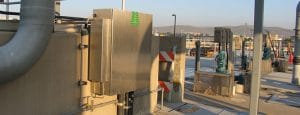 It’s been traditionally accepted that achieving below ambient cooling required refrigerant-based air conditioning or compressed air coolers, making air-to-air heat exchangers unfit for certain high ambient applications. Fortunately, that’s often no longer the case, thanks to Noren’s innovative air-to-water heat exchangers that can cool electronics relying solely on water temperature. Air-to-water coolers provide the benefits of below ambient cooling and the cost and energy-saving advantages of lowering your overall carbon footprint. (more…)
It’s been traditionally accepted that achieving below ambient cooling required refrigerant-based air conditioning or compressed air coolers, making air-to-air heat exchangers unfit for certain high ambient applications. Fortunately, that’s often no longer the case, thanks to Noren’s innovative air-to-water heat exchangers that can cool electronics relying solely on water temperature. Air-to-water coolers provide the benefits of below ambient cooling and the cost and energy-saving advantages of lowering your overall carbon footprint. (more…)
How Do Cold Plates Work?
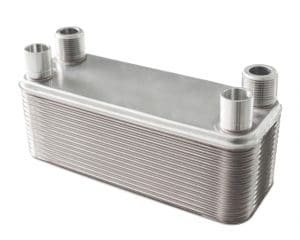 Today’s most demanding, high-performance electrical and technological applications were made possible largely due to innovative thermal management techniques. In applications where power output is high and space is limited, cold plates have become vital for their combination of high thermal conductivity and compact design. At Noren Thermal, we specialize in providing the most efficient solutions for transferring electrical waste heat, and that includes custom-designing cold plate applications for systems that cannot be efficiently cooled with ambient heat exchangers. (more…)
Today’s most demanding, high-performance electrical and technological applications were made possible largely due to innovative thermal management techniques. In applications where power output is high and space is limited, cold plates have become vital for their combination of high thermal conductivity and compact design. At Noren Thermal, we specialize in providing the most efficient solutions for transferring electrical waste heat, and that includes custom-designing cold plate applications for systems that cannot be efficiently cooled with ambient heat exchangers. (more…)
Thermal Management Terms – Different Ways to Cool Electrical Equipment
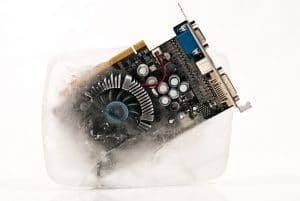 If electrical devices could reach 100 percent efficiency—meaning they didn’t generate waste heat as they operated—then cooling systems would not be needed to prevent overheating. Unfortunately, that isn’t currently possible; however, thermal management for electronics has advanced impressively over the years, making it easier and more efficient than ever to keep vital electronics functioning properly. At Noren Thermal, we utilize over 40 years of experience in the industry to create customized ways of cooling electrical equipment, and three of the most common methods are convection, conduction, and phase-change cooling. (more…)
If electrical devices could reach 100 percent efficiency—meaning they didn’t generate waste heat as they operated—then cooling systems would not be needed to prevent overheating. Unfortunately, that isn’t currently possible; however, thermal management for electronics has advanced impressively over the years, making it easier and more efficient than ever to keep vital electronics functioning properly. At Noren Thermal, we utilize over 40 years of experience in the industry to create customized ways of cooling electrical equipment, and three of the most common methods are convection, conduction, and phase-change cooling. (more…)
Eliminating Contamination in Air Cooled Heat Exchangers
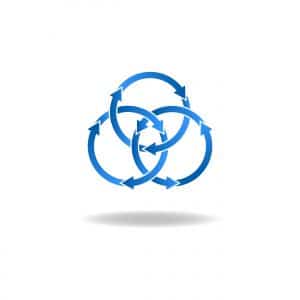 Electronic devices are typically housed in closed panels to avoid air and moisture contamination that could erode electrical components. Small cabinets also make it less costly to keep electrical panels cooled as they operate; however, being enclosed makes it necessary to keep the air conditioning on constantly. In many cases, the costs of controlling that waste heat mitigate the savings of utilizing electrical enclosures in the first place. Noren’s air cooled heat exchangers solve this dilemma by utilizing green energy to transfer heat efficiently, and in a closed loop system that doesn’t expose electrical panels to the open air. (more…)
Electronic devices are typically housed in closed panels to avoid air and moisture contamination that could erode electrical components. Small cabinets also make it less costly to keep electrical panels cooled as they operate; however, being enclosed makes it necessary to keep the air conditioning on constantly. In many cases, the costs of controlling that waste heat mitigate the savings of utilizing electrical enclosures in the first place. Noren’s air cooled heat exchangers solve this dilemma by utilizing green energy to transfer heat efficiently, and in a closed loop system that doesn’t expose electrical panels to the open air. (more…)
The Value of Centralized Design and Manufacturing
 Even a top-notch product can see a decline in value when it doesn’t perform as well as intended. In the production of thermal management solutions, that can prove disastrous for clients who rely on those products to keep their operations running smoothly. Such disconnect between the expectation and reality of a product often occurs because different aspects of analysis, design, and manufacturing are isolated from each other. At Noren Thermal, we provide everything—including systems analysis, customized design, prototype building, and product testing—all under one roof. This allows for immediate and face-to-face communication between every department to centralize the logistics of thermal management design and manufacturing. (more…)
Even a top-notch product can see a decline in value when it doesn’t perform as well as intended. In the production of thermal management solutions, that can prove disastrous for clients who rely on those products to keep their operations running smoothly. Such disconnect between the expectation and reality of a product often occurs because different aspects of analysis, design, and manufacturing are isolated from each other. At Noren Thermal, we provide everything—including systems analysis, customized design, prototype building, and product testing—all under one roof. This allows for immediate and face-to-face communication between every department to centralize the logistics of thermal management design and manufacturing. (more…)
Heat Exchangers to Keep the Food & Beverage Industry Running
 When you think of thermal management for the food and beverage industry, refrigeration may be the first thing that comes to mind. Yet, besides keeping highly perishable items from spoiling, thermal management also serves another vital purpose—keeping vital equipment operational so that food processing companies can keep their products flowing. Conventional refrigeration units may still be necessary in many instances, but Noren’s heat exchangers help the food and beverage industry save money and energy by efficiently cooling the electronics that keep machinery running. (more…)
When you think of thermal management for the food and beverage industry, refrigeration may be the first thing that comes to mind. Yet, besides keeping highly perishable items from spoiling, thermal management also serves another vital purpose—keeping vital equipment operational so that food processing companies can keep their products flowing. Conventional refrigeration units may still be necessary in many instances, but Noren’s heat exchangers help the food and beverage industry save money and energy by efficiently cooling the electronics that keep machinery running. (more…)
Air-to-Air vs. Air-to-Water Heat Exchangers: Which Are Better?
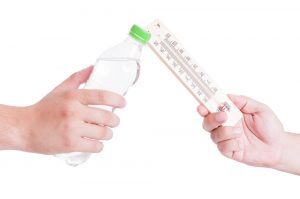 The waste heat that electronics give off can damage circuits and other components. In many cases, though, controlling that heat doesn’t necessarily require chilling the entire enclosure, which means air conditioners and compressed air coolers are often unnecessary. A better alternative is to keep the air cool by dissipating the heat emanating from the circuits. This can be achieved with Noren’s air-to-air and air-to-water heat exchangers, both of which can effectively replace conventional air conditioning units. Deciding which is better depends on the unique needs of each application, which Noren helps determine through comprehensive design and analysis for every client. (more…)
The waste heat that electronics give off can damage circuits and other components. In many cases, though, controlling that heat doesn’t necessarily require chilling the entire enclosure, which means air conditioners and compressed air coolers are often unnecessary. A better alternative is to keep the air cool by dissipating the heat emanating from the circuits. This can be achieved with Noren’s air-to-air and air-to-water heat exchangers, both of which can effectively replace conventional air conditioning units. Deciding which is better depends on the unique needs of each application, which Noren helps determine through comprehensive design and analysis for every client. (more…)
Complex Thermal Management Demands for Advanced Technology
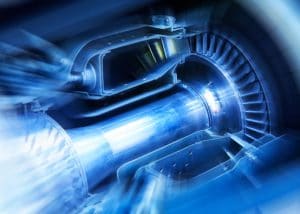 As new technology changes the world, it also comes with a high demand for innovative thermal management solutions. For any technology to work, it must have a cost- and energy-efficient means of dissipating the waste heat that its electrical components generate. While air conditioners and compressed air systems used to be the gold standard for cooling electronics, high energy, maintenance, and operation costs are forcing more industries to search for cleaner and more affordable solutions. To meet the increasingly complex thermal management demands of advanced technology, Noren Thermal tailors every solution to meet clients’ unique demands across a number of different applications. (more…)
As new technology changes the world, it also comes with a high demand for innovative thermal management solutions. For any technology to work, it must have a cost- and energy-efficient means of dissipating the waste heat that its electrical components generate. While air conditioners and compressed air systems used to be the gold standard for cooling electronics, high energy, maintenance, and operation costs are forcing more industries to search for cleaner and more affordable solutions. To meet the increasingly complex thermal management demands of advanced technology, Noren Thermal tailors every solution to meet clients’ unique demands across a number of different applications. (more…)
Noren Heat Pipes Made Heat Exchangers Viable for Hazardous Locations
 Today, heat exchangers are widely recognized as more efficient and cost-effective solutions to managing electrical waste heat. Yet, it wasn’t until the introduction of Noren’s heat pipe technology that heat exchangers could be certified to operate in hazardous locations. Noren Thermal was the first manufacturer to receive national and international certification for HX applications in hazardous conditions, paving the way for heat exchangers to revolutionize industries such as oil and gas, power generation, waste water treatment, food processing, and more. (more…)
Today, heat exchangers are widely recognized as more efficient and cost-effective solutions to managing electrical waste heat. Yet, it wasn’t until the introduction of Noren’s heat pipe technology that heat exchangers could be certified to operate in hazardous locations. Noren Thermal was the first manufacturer to receive national and international certification for HX applications in hazardous conditions, paving the way for heat exchangers to revolutionize industries such as oil and gas, power generation, waste water treatment, food processing, and more. (more…)
Heat Exchangers Solve the Air Conditioning Conundrum
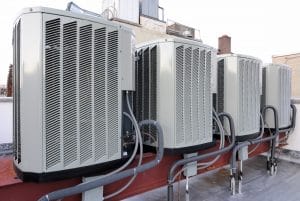 When it comes to controlling the waste heat of electronic equipment, the generally accepted rule of thumb is that colder is always better. That mindset stems from an era when air conditioning and compressed air were the pinnacles of heat dissipation technology. Today, however, the high cost and energy expenditures needed to keep air conditioning running 24/7 have forced companies to find more efficient solutions to manage electronic waste heat—such as closed loop heat exchangers. By utilizing the physics of latent heat vaporization, heat exchangers solve many of the conundrums posed by conventional air conditioning and compressed air systems. (more…)
When it comes to controlling the waste heat of electronic equipment, the generally accepted rule of thumb is that colder is always better. That mindset stems from an era when air conditioning and compressed air were the pinnacles of heat dissipation technology. Today, however, the high cost and energy expenditures needed to keep air conditioning running 24/7 have forced companies to find more efficient solutions to manage electronic waste heat—such as closed loop heat exchangers. By utilizing the physics of latent heat vaporization, heat exchangers solve many of the conundrums posed by conventional air conditioning and compressed air systems. (more…)







